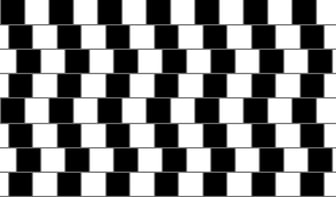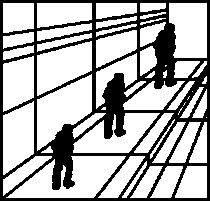Lesson 6 - Assessment Activity - 'Fast and slow thinking' : a short student documentary film.
The purpose of this assessment activity is both to reinforce your understanding of some of the key ideas of the first semester but also to give you a taste of the sort of assessment activities you can expect to undertake as part of the International Baccalaureate Diploma Programme.
|
|
Firstly, the content of the Critical Thinking lessons has given you an introduction to the IB TOK course which is concerned with how we can claim to know what we know. We have examined, for example, how our reason or the language we use provide us with different ways of knowing the world. Secondly, this assessment will be completed independently, in small groups through the production of a short film, the form and content of which will be largely decided by each group of students. This is typical of the creative form of assessments in the IB, where students decide for themselves the content of what they will produce. This is both a challenge and an opportunity to see if you can do it. |
The film - Thinking Fast and Slow.
For the film itself, there will be very few requirements but plenty of suggestions. To start with, here are two short films that explain the main ideas behind thinking fast and slow, or the two systems.
For the film itself, there will be very few requirements but plenty of suggestions. To start with, here are two short films that explain the main ideas behind thinking fast and slow, or the two systems.
|
|
|
|
Five Requirements (what the film must do). The film
|
Cinq exigences (ce que le film doit faire). Le film
|
|
Ten Recommendations
|
Dix recommandations
|
Endless Suggestions
Begin by reviewing Lesson 1 which was dedicated to 'fast and slow' thinking. In that lesson, I tried to show not only how the two systems worked, but also how our brains can make mistakes when we over depend on one system rather than the other. Remember the quiz you did during the lesson? The first four questions illustrated the problem of relying on the intuition of System 1, but question 5 showed what we miss when we rely too heavily on System 2... remember the gorilla? Maybe you could consider doing something similar in your film? For example, you could ask the questions designed to trip-up system 1. You could use visual 'tricks' like these. (see also Lesson 3 Senses summary below).
Or you could also refer to the cognitive reflection test (bat/ball, lily pads and widgets!) that was designed in 2005 by Shane Frederick and that measures a person's tendency to override an incorrect instinctive response and engage in further reflection to find a correct answer.
And to show the limitations of System 2 you could even make your own version of the gorilla experiment like the selective attention test below or something from the brilliant Richard Wiseman's Quirkology website. What's important is showing that when you're really concentrating hard - using System 2 - you miss a lot of what you would normally notice.
And to show the limitations of System 2 you could even make your own version of the gorilla experiment like the selective attention test below or something from the brilliant Richard Wiseman's Quirkology website. What's important is showing that when you're really concentrating hard - using System 2 - you miss a lot of what you would normally notice.
|
|
|
|
Making the film
There are two stages to making the film.
There are two stages to making the film.
- You need to decide on which experiment(s) you wish to include. I will show you how to shoot your own movie perception test you can include this or any other experimental aspect of fast and slow thinking as part of your actuality footage. These clips should not be too long and must clearly illustrate the concept of 'system 1' and 'system 2'.
- You need to incorporate your experiment actuality footage into a complete film which has at least four sections: exposition, explanation, actuality and conclusion. This page explains how you are expected to put your film together.



